Talking Fracking: a consultation on unconventional oil and gas
A consultation on unconventional oil and gas in Scotland.
The technologies involved
This section describes unconventional oil and gas technologies, what they involve in practice, what is located at a typical site and the scale of the resource in Scotland.
Conventional versus unconventional oil and gas
The oil and gas industry use a range of techniques to extract oil and gas from underground reserves.
Conventional oil and gas reserves can be exploited by drilling a well, with oil or gas then flowing out under its own pressure.
Conventional deposits are contained in porous rocks with interconnected spaces, such as limestone and sandstone. These interconnected spaces give rise to permeability that allows oil or gas to effectively flow through the reservoir to the well.
Unconventional oil and gas deposits are contained in impermeable rocks, such as shale or coal deposits. In these cases, the oil or gas cannot easily flow through the reservoir. To extract the oil and gases, techniques such as hydraulic fracturing (commonly referred to as fracking) or coal bed methane are used (Figure 3).
What is hydraulic fracturing?
Hydraulic fracturing (or 'fracking') is a drilling technique that is used to fracture rock to release the oil and gas contained in those rocks. It is most commonly used to extract oil and gas from shale.
The rock is fractured by injecting pressurised fluids into the rock to prise open small spaces in the rocks, which release the oil or gas.
Hydraulic fracturing is used extensively in North America for extracting oil and gas from shale reserves. By 2015, the number of hydraulically fractured wells in the United States reached 300,000 [1] . Hydraulic fracturing is also used by other industries, as outlined in Box 1.
Box 1: Other uses of hydraulic fracturing
Hydraulic fracturing is not a new technology. It is used to increase the permeability of subsurface rocks and may be undertaken for a variety of purposes outside of unconventional oil and gas developments, including:
- to stimulate groundwater wells;
- to stimulate conventional oil and gas deposits, for instance in the North Sea;
- to measure stress in the Earth; and
- as part of a deep geothermal project.
The specific processes and technologies involved (for instance the duration and depth of the activity, whether wastewater is produced or whether chemicals are used) will vary depending on the purpose and form of the hydraulic fracturing.
Figure 3: Conventional versus unconventional deposits [2] .
The use of the Forth Bridge is for scale only, and does not indicate a potential geographical drilling location.
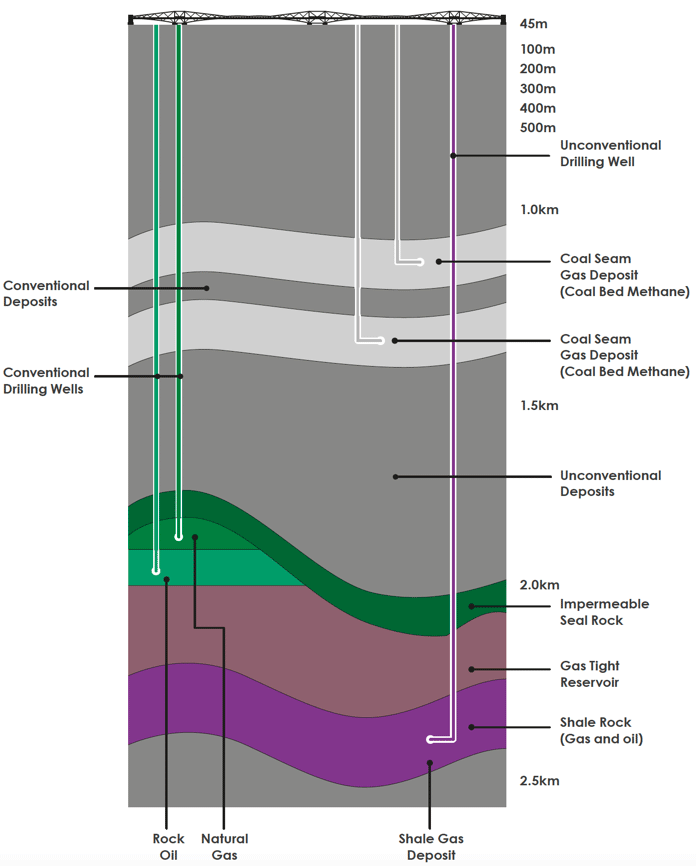
How is hydraulic fracturing carried out?
A well drilled for hydraulic fracturing for unconventional oil and gas is usually between 1 and 3 kilometres deep. The well, which has concrete and steel casings, is drilled vertically until it has reached the shale rock, at which point it will curve horizontally into the shale.
Water is injected into the shale at high pressure to create, or enlarge, existing tiny fractures in the rock that may only be a few fractions of a millimetre in width.
The injected water contains proportions of sand (around 5%) to help hold open the fractures. Chemicals are also used (less than 1%) to reduce friction and protect the drilling equipment from corrosion, and to remove the accumulations of microorganisms and mud from drilling equipment.
The number and type of chemical additives used will depend on the characteristics of the water and geology. The chemicals used in hydraulic fracturing is one of the issues examined by the Health Impact Assessment, which is described on PDF page 34.
Some fluid will return to the surface once the shale has been fractured. This fluid is known as flowback water, and it is stored, treated and disposed of at a suitable waste treatment facility.
Figure 4: Illustration of hydraulic fracturing.
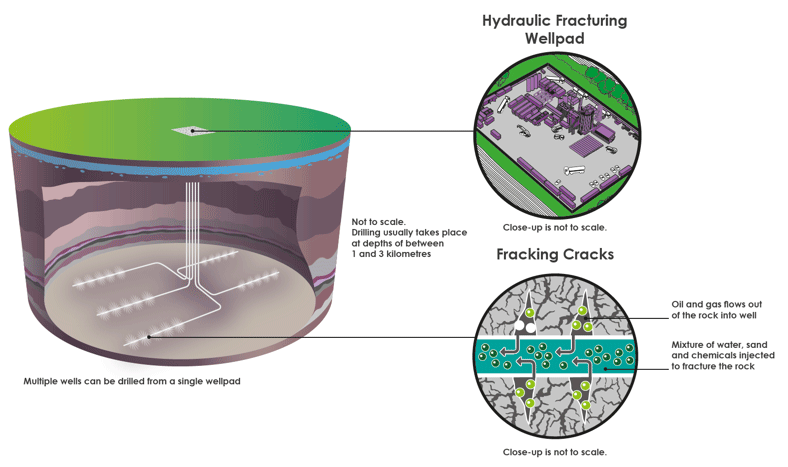
What is coal bed methane?
Coal bed methane is also considered to be an unconventional source of gas. This is because the gas is present in the coal rather than being held in pore spaces.
To extract the gas, water is drained from the coal seam to release pressure (known as dewatering). This may be undertaken with or without hydraulic fracturing, depending on local geological conditions.
How is coal bed methane extracted?
The majority of the gas in a coal seam is absorbed within the microscopic pores in the coal. Water contained in the seam is removed to encourage gas to flow from the microscopic pores in the coal.
To do this, boreholes are drilled and water from the coal seam is pumped from those boreholes. Gas then travels to the borehole along the main fractures in the coal. Horizontal boreholes may be used to encourage maximum flow of gas into the borehole.
The gas can then be collected at the surface and dispatched to surface facilities for processing and use. The pumped water is stored, treated and disposed of at a suitable waste treatment facility.
Where are unconventional oil and gas resources?
Shale deposits are mainly found at depths greater than 1 kilometre, and in Scotland they are usually located at depths of between 1 and 3 kilometres.
There are a number of shale deposits in Scotland, most notably across an area of Scotland's central belt known as the Midland Valley (Figure 5). An analysis of the potential shale resources was published by the British Geological Survey in 2014 [3] .
There are also coal deposits from which coal bed methane could be extracted in the Midland Valley and in south-west Scotland.
Figure 5: Shale oil and gas resources in the Midland Valley according to the British Geological Survey ( BGS) Report.
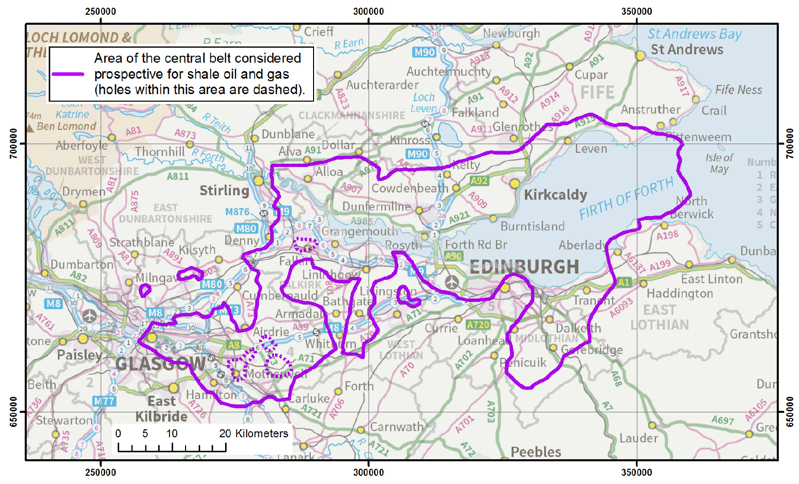
How much unconventional oil and gas is there?
The BGS estimate that the Midland Valley holds between 49.4 - 134.6 tcf (trillion cubic feet) of shale gas. By comparison, the Bowland Basin in Lancashire, England is estimated to hold between 822 tcf and 2,281 tcf of shale gas. For comparison, total annual gas consumption in Scotland in 2014 was estimated to be 150 billion cubic feet/year (0.15 tcf) [4] .
Only a proportion of these resources is likely to be commercially viable for development or production. Exploratory work would be required to better understand how much oil and gas could be economically and technically recovered.
The research to examine economic impacts commissioned by the Scottish Government has identified three potential unconventional oil and gas production scenarios in Scotland. These are discussed further on PDF page 29.
What takes place at a typical site?
A prospective development would usually undergo four stages (Figure 6). The moratorium on unconventional oil and gas means that only boreholes to take core samples are currently permitted in Scotland (Box 2).
Box 2: Boreholes for core sampling
Drilling a borehole for core sampling is a standard method of investigating what is underground. It produces a core of rock that allows the features of what is underground to be examined. Boreholes are drilled regularly across Scotland for a variety of purposes, including civil engineering projects, water supply, and geothermal energy. It is estimated that over 5,000 boreholes are drilled each year in Scotland.
In line with our evidence-led approach to unconventional oil and gas, the Scottish Government supports scientific work to improve our understanding of oil and gas resources in Scotland. In October 2015, the Scottish Government confirmed that boreholes for core sampling are not included under the terms of the moratorium.
A drilling pad is a base built to provide space for the drilling rig, piping and storage equipment, and other site facilities such as mobile cabins for workers. Pads are usually around the size of a football pitch (5,000-8,000 square metres).
The average height of a typical drilling rig is about 38 metres, which is equivalent to a 10 or 11 storey building. Drilling rigs are temporary features of a site, and are on-site while drilling takes place.
Further details of what takes place at a typical site for hydraulic fracturing are provided in Figure 7.
Figure 6: Stages of a typical unconventional oil and gas development. Timeframes are indicative and do not include the time taken to secure relevant planning or environmental consents.
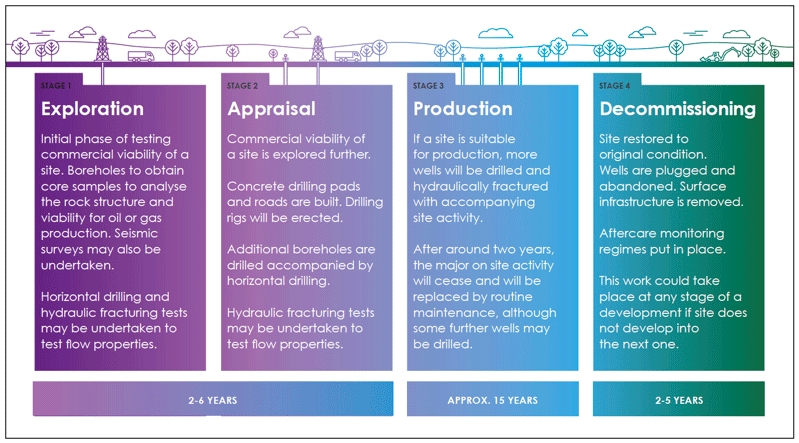
Figure 7: Examples of what takes place at a typical site.
Stages of an unconventional oil and gas development
A prospective unconventional oil and gas site typically undergoes four stages of development. The total estimated lifespan of a site can be up to 20-30 years depending on whether the site is suitable for production. The main activities that take place during the different phases of an unconventional oil and gas development are summarised here:
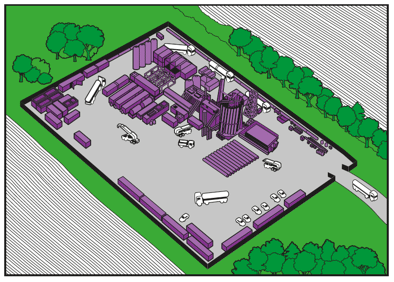
Exploration and Appraisal Phase
'Exploration and appraisal' refers to the initial phases of testing the commercial viability of a site. Boreholes are drilled to obtain core samples to analyse the rock structure and viability for oil or gas production. Seismic surveys may be undertaken. Horizontal drilling and hydraulic fracturing tests may be undertaken.
The exploration and appraisal phase typically lasts between two and six years. Drilling pads and roads must first be built (and maintained). A drilling pad is roughly the size of a football pitch. Drilling rigs would be erected at a height of around 38 metres.
The total time required to drill and complete a well is four to five weeks depending on target depth and underlying geological conditions.
Flood lights may be mounted on the drilling rig and other lighting to support safe working at night may be put in place. The site would also house generators, sealed container units for chemicals and waste materials and fluids. Portable offices and work amenities would be located on-site.
A number of goods and materials would be transported on and off site, including equipment, drill cuttings, fluids and chemicals. The transport impacts research estimated that a well pad could require traffic movements to be sustained at around 190 per week for a period of approximately two years during the exploration and appraisal phase. For comparison, a warehouse/distribution centre may be expected to generate approximately 5,000 two-way HGV movements per week (further details on transport impacts are outlined on PDF page 35).
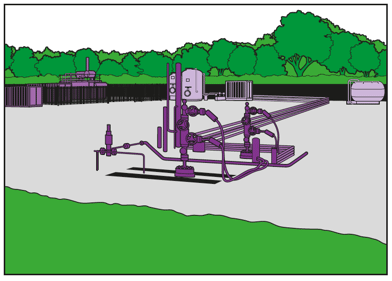
Production Phase
If a site is suitable for production, more wells would be drilled and hydraulically fractured with accompanying site activity. After around two years, the major on-site activity would cease and would be replaced by routine maintenance, although some further wells may be drilled.
The initial phase of production would entail similar activities to an exploration and appraisal phase.
Once these activities cease, the primary activities at a site would be maintenance and movement of goods from the site, although further wells may be drilled. The production phase typically lasts around 15 years. The pad would remain in place, alongside some small pieces of surface infrastructure and equipment.
During the production phase, the transport impacts research predicts that traffic movements would be significantly lower than during the exploration and appraisal phase.
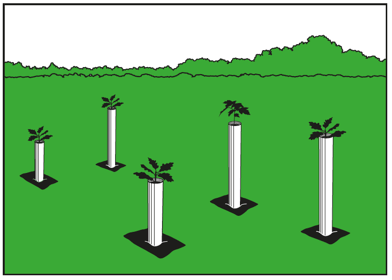
Decommissioning Phase
The site is restored and wells are plugged and decommissioned. Surface infrastructure is removed. This work could take place at any stage of a development if a decision is taken not to move to the production phase.
All sites should be restored to their prior condition as soon as possible after drilling is complete. Wells are filled with cement and pipes are cut and plugged at around 2 metres from the ground. The pad is removed.
How could the oil and gas be used?
The main product from unconventional oil and gas reserves is natural gas, which is a source of energy for heating, cooking, and electricity generation. More information on the role of gas in Scotland's energy mix is provided on PDF page 41.
The natural gases from shale deposits may also have a high content of natural gas liquids, which are gases that can be converted or processed as liquids at the surface, and include substances like ethane, propane or butane.
Natural gas liquids such as ethane are important raw materials for the petrochemical and manufacturing industry. They have applications in a wide range of high-value products including plastics, detergents, clothing and solvents (Table 2).
Not all shale deposits hold large quantities of natural gas liquids, such as ethane. Further exploratory work would be required to understand whether Scottish shale deposits contain high levels of ethane or methane that are economically and technically viable for industry.
Some shale deposits may also release shale oils, also known as tight oils, which are a form of light crude oil. Shale oils have similar properties to crude oils extracted by conventional methods, for instance in the North Sea. They can be refined to produce heating oils, naphtha, diesel, kerosene, gasoline, liquid petroleum gas and other commodities used in industry and manufacturing.
Table 2: Uses of natural gas liquids [5] .
| Natural Gas Liquid |
Applications |
End-use products |
Primary |
|---|---|---|---|
| Ethane |
Ethylene for plastics production; petrochemical feedstock |
Plastic bags; plastics; |
Industrial |
| Propane |
Residential and commercial heating; cooking fuel; petrochemical feedstock |
Home heating; small stoves and barbeques; LPG |
Industrial, residential, commercial |
| Butane |
Petrochemical feedstock; blending with propane or gasoline |
Synthetic rubber for tyres; LPG; lighter fuel |
Industrial, transportation |
| Isobutane |
Refinery feedstock; petrochemical feedstock |
Alkylate for gasoline; aerosols; refrigerant |
Industrial |
| Pentane |
Natural gasoline; blowing agent for polystyrene foam |
Gasoline; polystyrene; solvent |
Transportation |
| Pentane Plus |
Blending with vehicle fuel; exported for bitumen production in oil sands |
Gasoline; ethanol blends; oils and production |
Transportation |
Contact
Email: uogconsultation@gov.scot
There is a problem
Thanks for your feedback